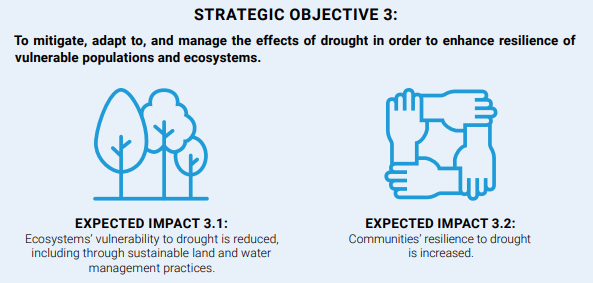Good Practice Guidance for monitoring drought hazard, exposure and vulnerability has been published by the UN convention that brings together 197 signatory Parties to address desertification and land degradation and mitigate the effects of drought. The report was prepared by scientists from the UK Centre for Ecology & Hydrology.
The guidance adds to the body of knowledge and expertise available to the Parties for the 2022 UN Convention to Combat Desertification (UNCCD) reporting progress. It helps parties to the convention to track their progress towards Strategic Objective 3 (SO3), one of five objectives in the UNCCD 2018-2030 Strategic Framework:

As global average temperatures rise towards 2°C warmer than pre-industrial levels, drought impacts are predicted to worsen in many regions of the world, particularly under business-as-usual scenarios. More than 2 billion people are projected to be exposed to more frequent and severe droughts by the year 2100.
Lead author Lucy Barker from the UK Centre for Ecology & Hydrology said: “The UNCCD Good Practice Guidance informs the work of those reporting on progress towards SO3, how they monitor the three components of drought risk over time: hazard, the population exposed to drought and the vulnerability of that population.
“The Guidance balances state-of-the-art methodologies and data availability with the need for relative simplicity and global applicability. It has been a challenging and rewarding task for myself and UKCEH colleagues to bring the report together, working with contributors and reviewers from multiple nations and organisations from around the world. It is an important contribution to the efforts to improve collaboration and harmonisation in global scale drought monitoring and move towards a proactive, risk-management approach to increase resilience to drought.”
"...an important contribution to the efforts to improve collaboration and harmonisation in global scale drought monitoring and move towards a proactive, risk-management approach to increase resilience to drought." Lucy Barker, UKCEH
Dr Barron Joseph Orr, Lead Scientist for the UNCCD, said: “With the publication of this Good Practice Guidance, countries can now move in concert. This guidance will ensure that when their national stories are combined, the global picture that results will point policy makers towards appropriate land use and management actions to enhance the resilience of communities and ecosystems to drought.”
UKCEH lead authors were Lucy J Barker, Nathan J Rickards, Sunita Sarkar, Jamie Hannaford, Caroline King-Okumu and Gwyn Rees.
Click here to read the Good Practice Guidance.